Recession - Coming To Your Neighbourhood Soon
By Colin Twiggs
September 11, 2008 7:00 a.m. ET (9:00 p.m. AET)
These extracts from my trading diary are for educational purposes and should not be interpreted as investment or trading advice. Full terms and conditions can be found at Terms of Use.
The takeover of Fannie Mae and Freddie Mac may provide welcome relief to financial markets in the short term, but this will not save the economy from the approaching credit crunch. Estimates of write-downs from the mortgage crisis range between $500 billion and $1 trillion. Replacement equity has dried up as the solvency crisis deepens and further potential losses from falling housing prices cast a shadow over the market. In the same way that banks can increase lending by $10 for every $1 increase in reserves, the opposite is likely to occur with any decrease in reserves. A $500 billion write-off from reserves, with no ready means of replacement, will force a $5 trillion contraction in bank credit. Roughly equal to the entire mortgage portfolio of Fannie Mae and Freddie Mac — or 10 times the annual GDP of Australia. On top of that we face gradual contraction of the two GSE's mortgage portfolios over the next four to five years as Treasury attempts to bring them back under control. And there's more. The financial sector still faces further contraction of off-balance sheet funding structures as well. While the above calculations are rough and ready, we can be sure that the global credit contraction will be a big number. And neither the Fed nor Treasury have the resources to continually come to the rescue.
The only bright spot is falling oil prices as G7 economies head for a recession. Crude is testing the key psychological level of $100 and failure would confirm the primary down-trend. OPEC resolved to cut production by 500,000 barrels a day, in order to support the current price level (Bloomberg). But that is unlikely, on its own, to divert the primary down-trend. Recession in both the Chinese and US economies could lead to crude testing support at the 2007 low of $50/barrel.
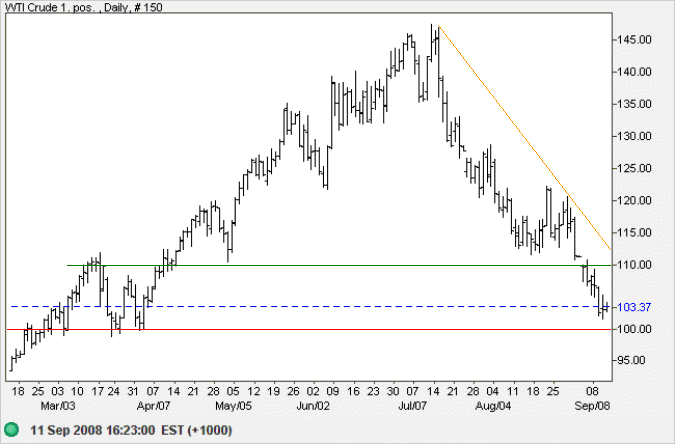
Stocks
The Dow is testing a band of support between 11000 and 10700. Failure would signal a decline to the next band of support, between 10000 and 9700. A Twiggs Money Flow fall below recent lows at -0.02 would signal selling pressure — and increase the likelihood of another primary decline.
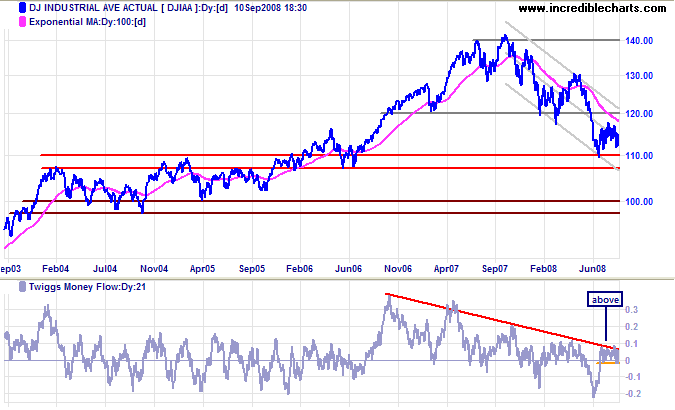
China continues to report double-digit growth in GDP, but the Shanghai Composite Index warns of a major slow-down. Short-term support at 2300 has failed and the index is headed for a test of 2000 — a fall of two-thirds from its peak at 6000.
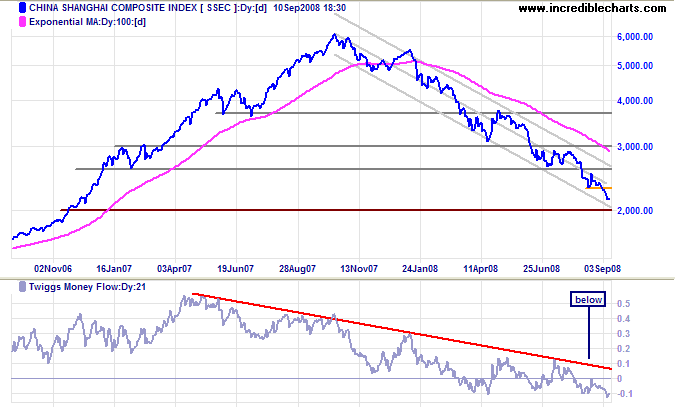
Treasury Yields
Ten-year treasury yields are headed for a test of support at 3.30 percent, but first expect a retracement to the new resistance level at 3.75 percent. Yield differentials (with 13-week treasury bills), on the other hand, are holding at 2.0 percent — reflecting healthy bank margins.
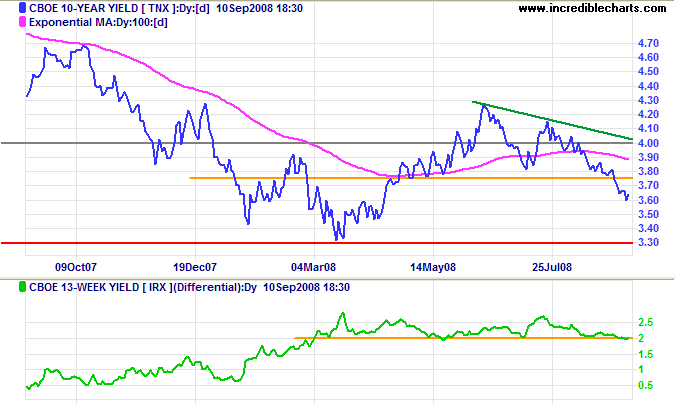
Market Uncertainty
The yield spread between 3-month LIBOR (the offshore inter-bank rate which is less prone to Fed manipulation) and 3-month T-bills remains elevated. Lenders are demanding a premium of more than 100 basis points above the T-bill yield — a long way from the 25 point spread enjoyed early 2007.
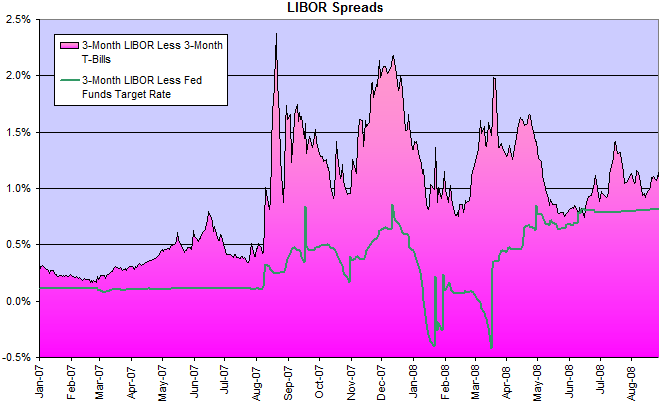
The TIPS spread, between 10-year treasurys and the equivalent TIPS rate, is falling sharply. The expected recovery has failed to materialize as confidence returns to mortgage-backed securities markets. If the decline continues, it will indicate that inflation expectations really are falling.
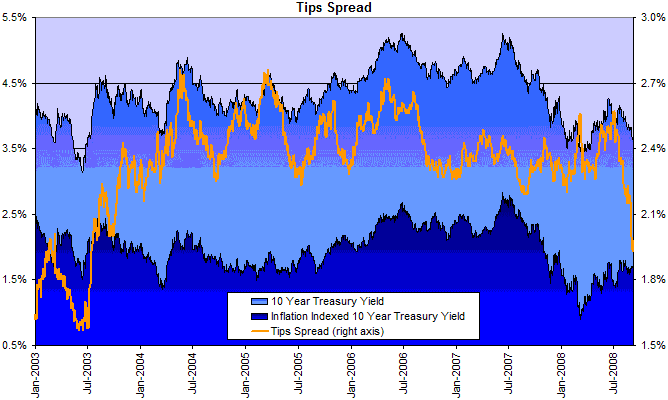
Financial Markets — Commercial Paper
The growing spread between asset-backed commercial paper and the fed funds target rate of 2 percent indicates rising pressure on insitutions to unwind off-balance sheet funding — increasing the precarious position of institutions who are reliant on wholesale funding.
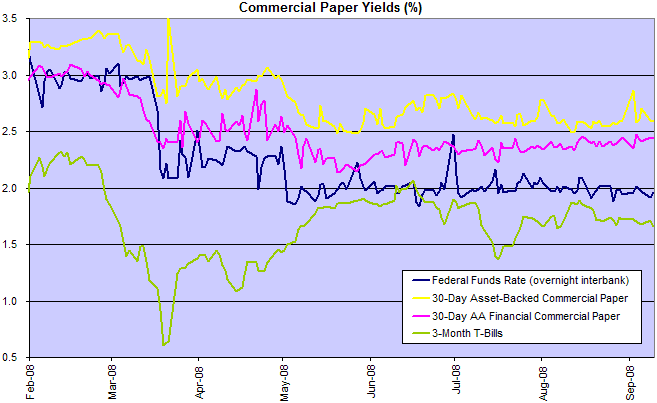
Total commercial paper in issue continues to decline.
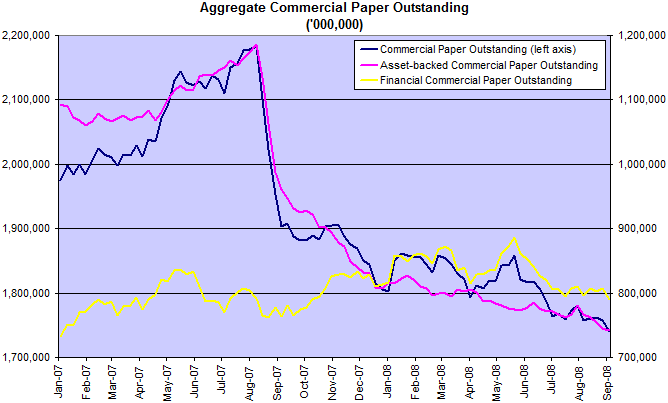
Corporate Bonds
Corporate bond spreads are increasing, with Baa/Aaa spreads at the highest level since 1991, in anticipation of rising defaults.
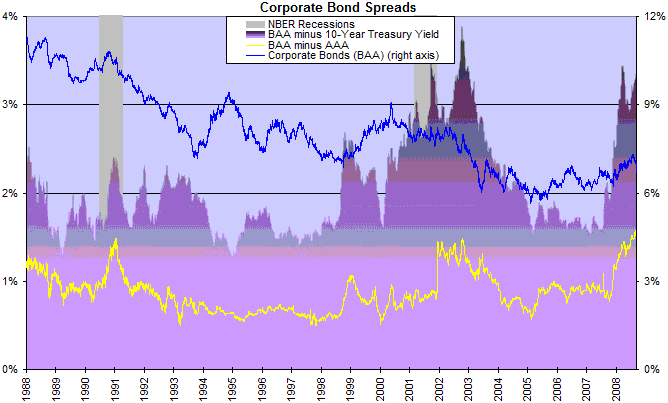
Housing
Rates on 30-year fixed mortgages reversed below 6.5 percent in response to falling treasury yields, but spreads continue to rise as lenders attempt to re-build their balance sheets. Rising mortgage rates have the potential to further suppress housing demand and prolong the down-turn.
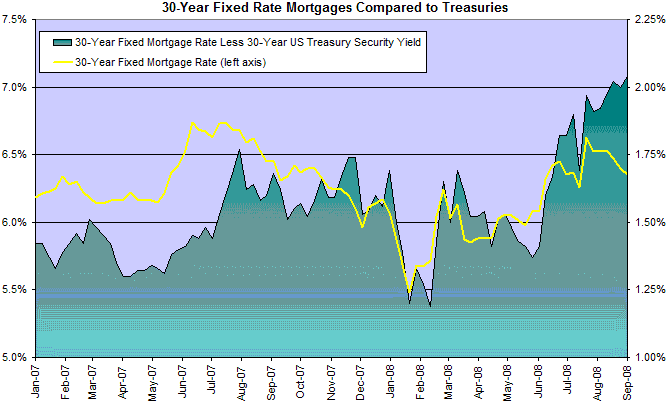
Commercial Real Estate
Commercial real estate also faces rising pressure as over-stretched investors attempt to offload assets. Mortgage-backed security (CMBS) spreads, over the 10-year swap rate, have climbed to almost 300 basis points, reflecting lenders concerns.
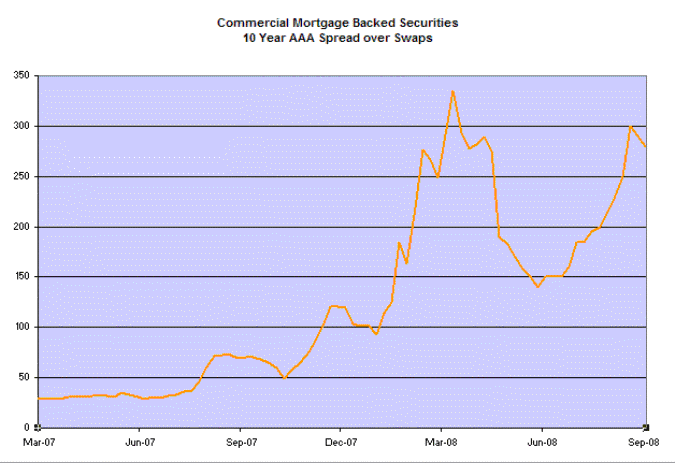
Bank Credit
Falling bank credit growth is merely the tip of the iceberg, with declining off-balance sheet funding further restricting consumption and new investment.
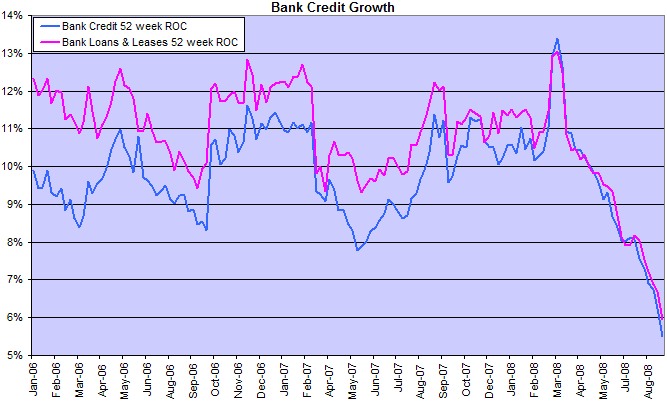
Record levels of Fed support for the financial system are likely to endure for several years. If we add the $29 billion Bear Stearns bailout to the chart below, the current total is close to $200 billion.
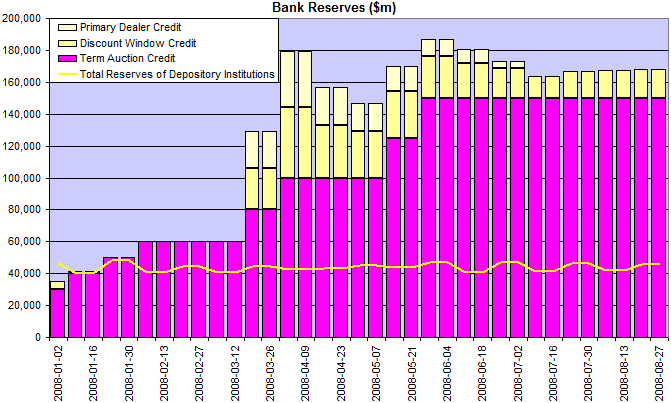
Employment
Unemployment is approaching its 2003 highs, indicating a pending recession.
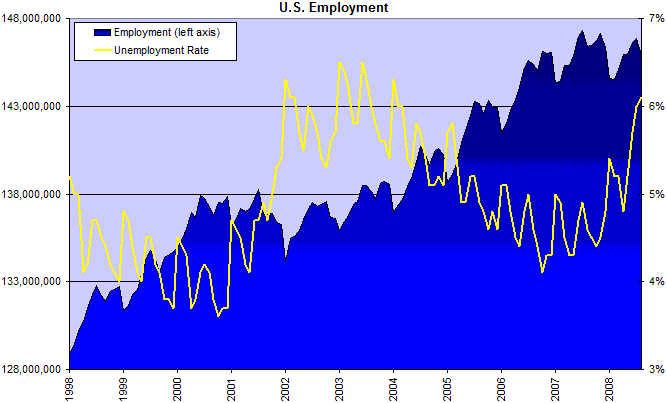
If stupidity got us into this mess, then why can't it get us out?
~
Will Rogers
To understand my approach, please read About The Trading Diary.

Author: Colin Twiggs is a former investment banker with almost 40 years of experience in financial markets. He co-founded Incredible Charts and writes the popular Trading Diary and Patient Investor newsletters.
Using a top-down approach, Colin identifies key macro trends in the global economy before evaluating selected opportunities using a combination of fundamental and technical analysis.
Focusing on interest rates and financial market liquidity as primary drivers of the economic cycle, he warned of the 2008/2009 and 2020 bear markets well ahead of actual events.
He founded PVT Capital (AFSL No. 546090) in May 2023, which offers investment strategy and advice to wholesale clients.
